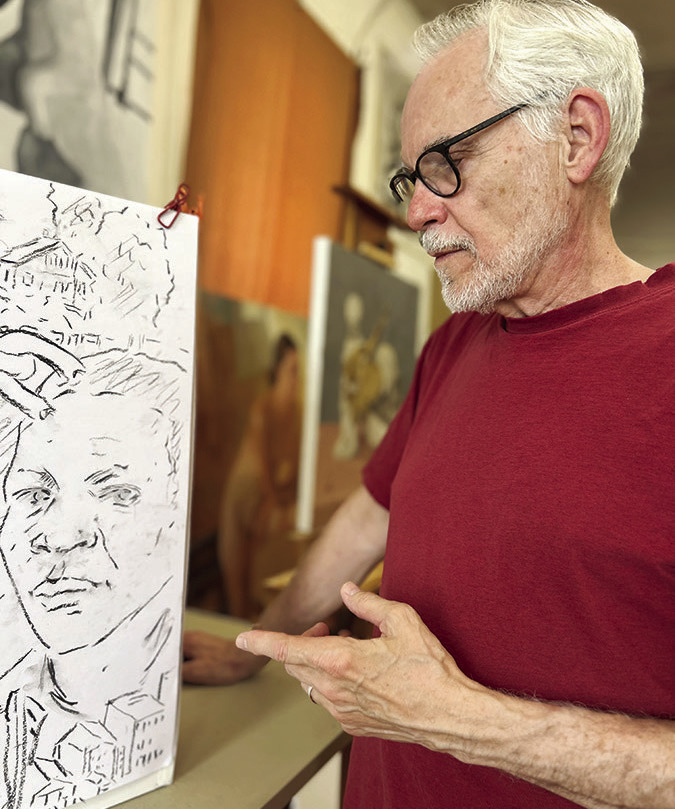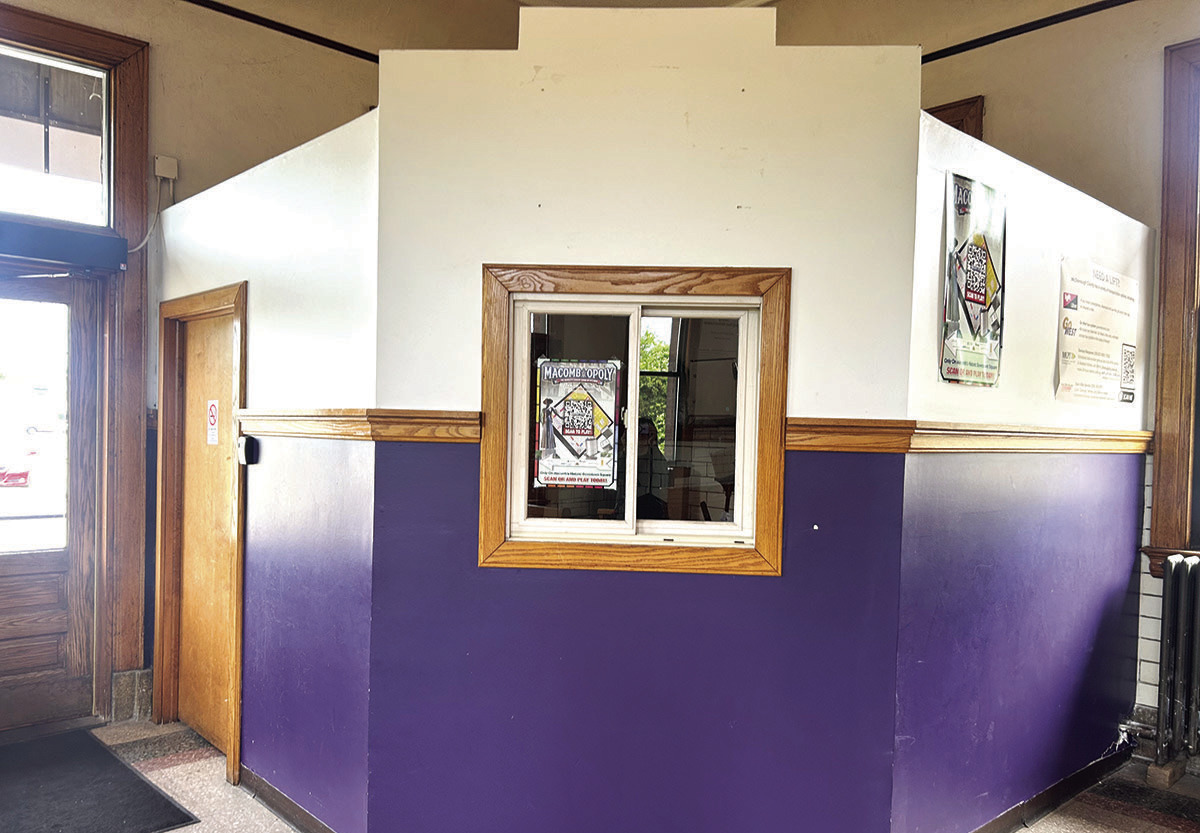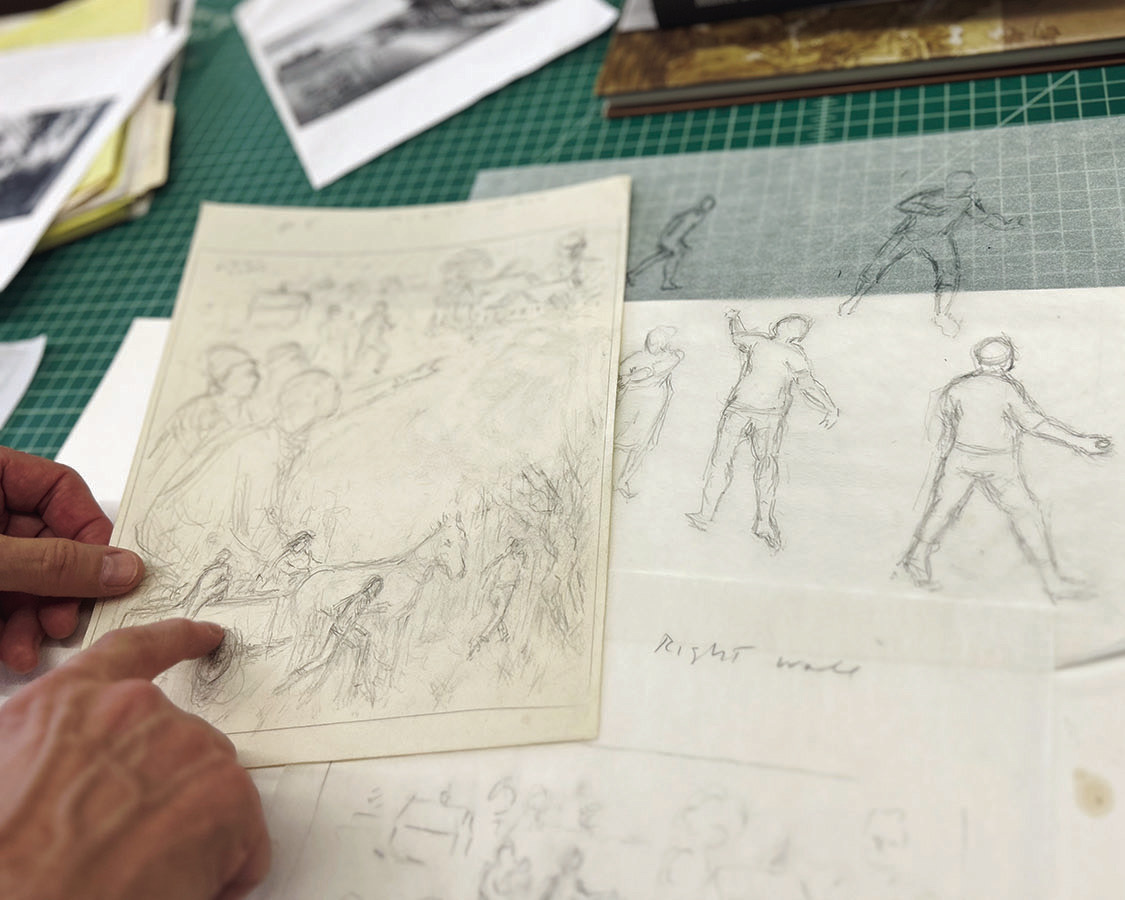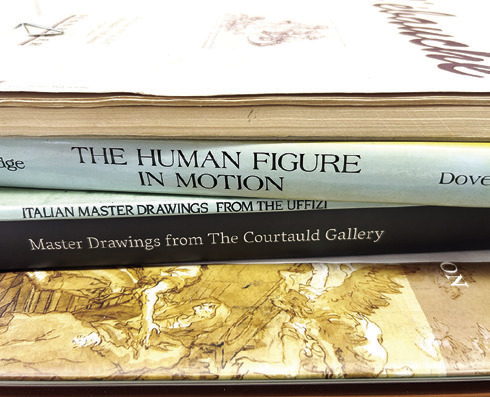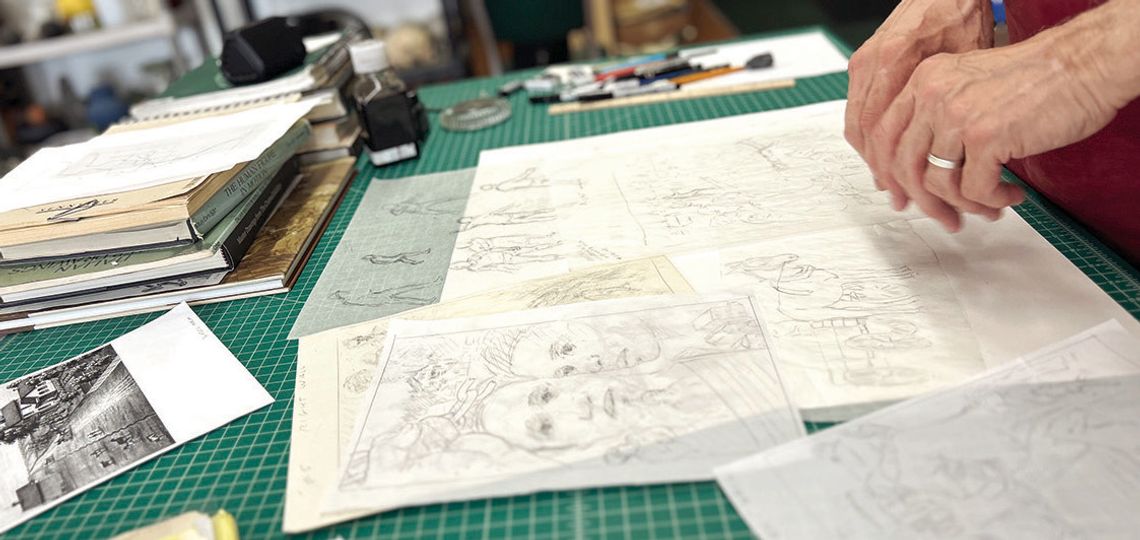MACOMB – A new mural by Western Illinois University Art Professor Emeritus Michael Mahoney is underway and will be installed inside the Thomas C. Carper Amtrak Station in Macomb, a fitting place for the latest public art project that pays tribute to McDonough County's place in the history of the Underground Railroad.
The Underground Railroad (UGRR) was composed of a series of secret routes and safe havens going from the south to the north during the early- to mid-19th century; however, what many people might not know is that an Illinois leg of the Underground Railroad ran directly through McDonough County.
McDonough County's two most prominent 'station masters' and 'conductors' were members of the Allison and Blazer families and Mahoney is incorporating the Alison and Blazer homesteads in the mural, based on accounts from the late David N. Blazer, who was the son of UGRR 'conductor' and 'station master' James Blazer. David Blazer was the author of the 1922 McDonough County Historical Society presentation, 'The History of the Underground Railroad of McDonough County, Illinois' (tinyurl.com/ mrape5v7), which has been widely printed.
The UGRR that extended through McDonough County ('Station No. 3') originated in Quincy, which was considered 'Station No. 1,' with 'Station No.
2' located at Round Prairie in Hancock County at the Pettyjohn or Burton Home, according to Blazer's writings. 'Station No. 3' was generally at the home of one of the Blazers on Camp Creek in Industry Township or the home of Billy Allison or one of his sons, Harmon, George and Andrew, at Troublesome Creek in Chalmers and Scotland townships. 'Station No. 4' was the home of Henry Dobbins in Fulton County where freedom seekers went on to Galesburg, Princeton and Canada.
Mahoney has also used Blazer's recollections, in addition to his own research and that of other UGRR archivists, to compose the sketches that will be painted on the three eight-foot Masonite (aka hardboard) panels, which will cover the walls of what was formerly known as the 'taxi stand' in the station's interior southeast corner. The design was recently approved by the funding agency, 'Looking for Lincoln Heritage Coalition,' the coordinating entity for the National Park Service's (NPS) Abraham Lincoln National Heritage Area. And with the green light given, Mahoney's sketches will soon be coming to life through his paintbrush.
The project total is $9,700, covered by an NPS grant of $4,850, with a matching grant from Visit Unforgettable Forgottonia. The matching funds have been used for research and the writing of the narrative for the next application for the National Park Service National Underground Railroad Network to Freedom program, conducted for the Macomb Area Convention and Visitors Bureau by Elisha Szyjka, a grant writer for the MACVB. The Network to Freedom's 'mission is to honor, preserve and promote the history of resistance to enslavement through escape and flight.
Underground Railroad History continues to inspire people worldwide. Through its mission, the Network to Freedom advances the idea that all human beings embrace the right to self-determination and freedom from oppression.
The program is a catalyst for innovation and partnerships that share the diverse legacy of the Underground Railroad across generations.'
'The Macomb Area Convention and Visitors Bureau's Executive Director Jock Hedblade and Assistant Director Jan Armstrong have been instrumental in establishing McDonough County's connection to the Underground Railroad and the journey of freedom seekers through the area.
The CVB understands the importance of establishing McDonough County’s connection to the Underground Railroad as part of our nation’s history, but also to utilize this historic significance to assist visitors and locals alike in gaining a better understanding of the contributions of local families in aiding freedom seekers,' Szyjka said. 'It also offers locals and visitors insights into the gravity of the situation for not only those individuals aiding freedom seekers, but also those escaping enslavement in the time leading up to the Civil War.'
It was Mahoney's 'The Legacy of the Rev. Dr.
C.T. Vivian' mural on the northeast side of the square, also commissioned by Visit Unforgettable Forgottonia (dba Macomb Area Convention & Visitors Bureau/ MACVB), that brought MACVB Executive Director Jock Hedblade back to Mahoney for the UGRR tribute.
'For well over a year, we worked with the National Park Service to secure this county's status as a National Underground Railroad Network to Freedom area. We wanted to bring attention to this special recognition and tell the story to the public.
When we decided one of the ways we could do this was through a mural, I knew immediately who I wanted to do it,' Hedblade said.
'Our collaboration with Michael on the C.T. Vivian mural was such a great working experience and the results were so stunning I knew unequivocally he was the guy.'
According to Hedblade, because the UGRR was clandestine, it can be difficult to both visually and tangibly to tell the story; however, with McDonough County such an integral link in the network that supported the heroic freedom seekers, it's a story that will be told through Mahoney's research and artwork.
'There is no better time than now to shine a light on these courageous people and take pride in our humble role in their epic quest,' Hedblade added.
Mahoney will begin painting his sketches in the coming weeks. The three panels showcase the bravery of the freedom seekers and those who helped them, Mahoney shared. The art will feature illustrations of escaping slaves, the men who helped, historic landmarks such as the Allison and Blazer homes and Quincy saw mill, wagon trails, the Mississippi River railroad tracks and breaking chains.
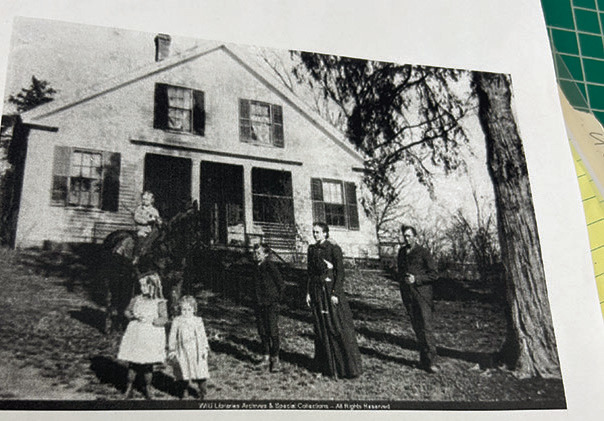
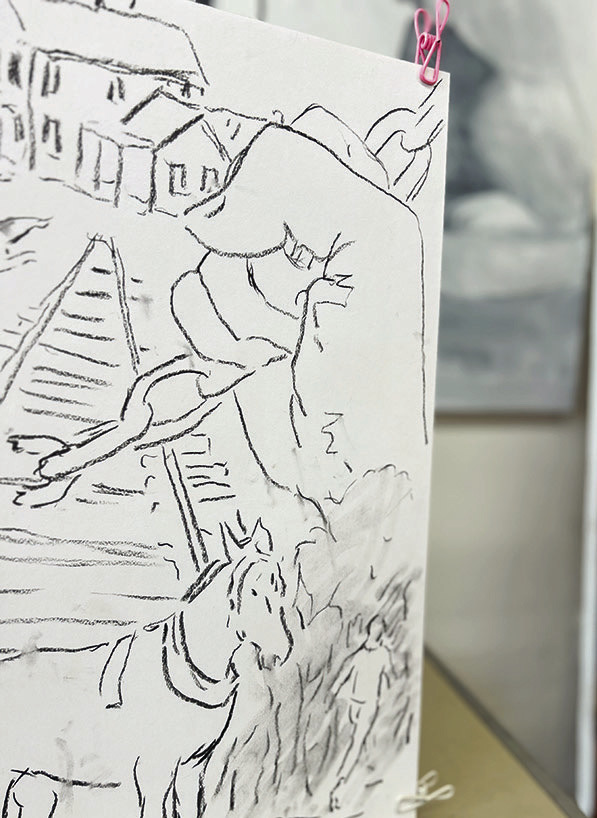
'Each panel tells a story, and they're joined together by an image on each side of fists breaking chains,' he explained. 'I'll also be incorporating other symbols of freedom, such as the north star and a lantern.'
Mahoney used a variety of sources for his work, including human figure drawing texts; images of freedom-seeking people, including photos of former slaves, which are the focal points of the middle panel, and the story of John Blazer's wagon hiding three freedom seekers being chased by anti-abolitionists, to name a few. Mahoney began his research in 2024 and began putting his pencil to sketchpads shortly after. He estimates that the sketches took about 40-60 hours to complete, which included his research. When inspiration hits and he's not in the studio, Mahoney uses the 'notes' function on his phone to outline his ideas.
'It all starts with the research, and then I begin sketching. I will work on it, and show my wife (WIU Art Professor Emeritus Julie Mahoney). She's a big help, like a good editor is to a writer,' Mahoney described.
Mahoney said he has refined his mural-painting technique since helping with the community's first mural on The Old Dairy, and the Vivian mural, both of which were put together like sophisticated paint-bynumbers. With the UGRR mural, rather than project on the wall/materials, Mahoney will re-draw his sketches onto the eight-foot panels, and from there, he'll paint the drawings. Once they're finished, they'll be carefully moved from his second-story downtown studio to the train station for installation, most likely next month. Mahoney is also working on a one-person show to begin Aug. 25 at the WIU Art Gallery, so to say he's a bit busy is an understatement. With some back issues that flare up, the time spent drawing and painting is sometimes dictated by his comfort level.
'Some days I need more motivation and breaks, and other days, I get so lost in my work that I just keep going and going,' he shared. 'And as the work goes on and becomes more demanding, doubt can creep in. That's when I take a break to really look at where I am and what I'm doing. That reveals a lot and helps me to keep going.'
His artistic talent goes back to his childhood. As the oldest of 10 kids, he realized around second grade when teachers began selecting his artwork for bulletin boards and other projects that brought him some attention. From there, following a path to a career in art was set in stone … with the exception of a moment of indecision in grad school.
'My friend was in law school, so I actually thought about going to law school,' he recalled. 'I told one of my former teachers, a Catholic priest, and he said, 'that doesn't sound like you,' and he was right.'
Mahoney taught art at WIU from August 1994 until his 2005 retirement. When Mahoney is creating a piece of art, whether it is the UGRR mural or a piece for his upcoming show, he said one of the biggest challenges is the aesthetic interest of work.
'I want the piece to be a delight to the eye. I want it to be stimulating and offer something that viewers will continue to take pleasure in with sustained attention to look at,' Mahoney shared.
During the process, Mahoney said his favorite part is composing the piece, finding the images in his brain and putting it all together.
'Finding the composition is hard work, but it's gratifying when it comes together,' he added. 'The element to the Underground Railroad mural is to convey the story and the importance of this time in our nation's history, to tell the story of those brave men and women who were seeking freedom. I wanted their faces to show their determination and courage.'
